The season for flowering trees is not only Spring time! Summer has some spectacular and almost forgotten flowering trees. Some are more remarkably beautiful than others but all create a mood of their own and convey the essence of the seasons in their leaves.
The best flowering trees offer more than just curb appeal! Their flowers attract pollinators, their fruits feed birds and small animals. They frame and shape the perspective of your landscaping and sparkle with life and promise. All of them big or small draw us in the garden to walk and savor the smells of the season.
When choosing trees for your Kansas City landscaping next year, don't forget your summer and early fall blossoms, so there is a sequence of bloom to look forward to. Also, consider fun leaf shapes, unique wood structure, snazzy fall color, and glistening bright berries.
There is so much enchantment in flowering trees. Here, in the order in which they bloom, are a few choices for your beautiful Kansas City landscapes!
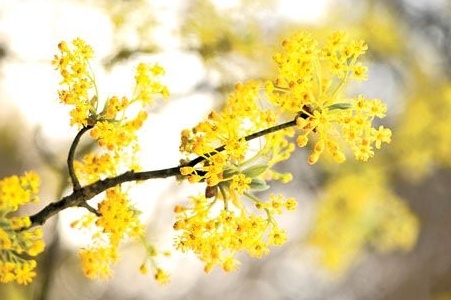
Sassafras
Their blossoms will delight your senses and bring your landscape to life.
Tiny yellow flowers on sassafras trees light up native landscapes in early spring, before the dogwoods bloom. Sassafras is native to North America and a host plant for the larvae of spice bush, swallowtail butterfly, and other butterflies and moths. Excellent tree for attracting birds due to high fat content of fruit. Can grow 30-60 ft tall, difficult to transplant, Hardy Zones 4-9
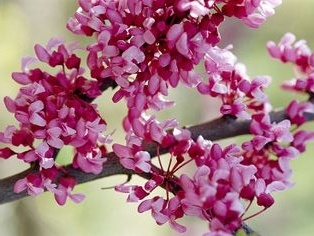
Redbud
Redbuds flowers last up to 3 weeks before the big, romantic heart shaped leaves emerge. Redbuds are suitable for North American natural landscapes, but they are also impressively beautiful in formal settings, as specimens and in woodland landscape settings. They grow to about 25 feet tall and tend to droop and sag as they age. Fall foliage is a bright yellow. Hardy Zones 4-9
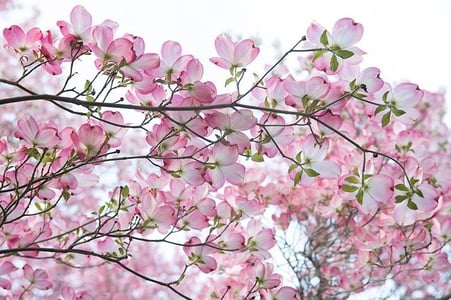
Flowering Dogwood
It's pink or white springtime flowers transform your landscape, bright red fruits in late summer and purple-red fall foliage. Birds build nesting sites in its branches and you can time the fall migration by watching the berries mature; bright glistening red berries ripen at the peak of migrations for thrushes (Songbid). Does well in partial shade. Grows 10 to 25 feet tall & wide, depending on variety. That is the biggest challenge when deciding where to plant one-they are an under story tree with horizontal branching in high shade, but they also develop a full, rounded crown in sum. Good drainage and circulation are important, as healthy trees resist dogwood anthracnose. . Zones: 5-9.
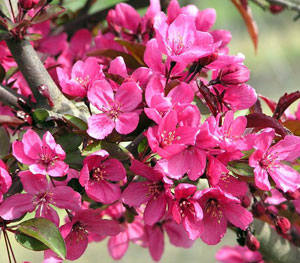
Flowering Crabapple
There are over 700 names varieties of crabapples. All bloomers that cover themselves in white, pink or red flowers in Spring. They are a beautiful small tree for your sunny landscape, hardy and reliable. They benefit occasionally from pruning. When they bloom the attract bees and other pollinators make the trees buzz with vibrant life. Check with the Missouri Department of Conservation for the best Crabapple to plant Most grow 15-25 feet tall. Hardy zone 4-7.
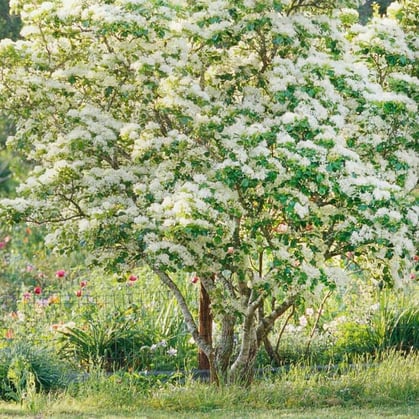
Fringe Tree
The Fringe tree has always played twelfth fiddle to dogwood, saucer magnolia, flowering cherry, Bradford Pear, and several other choices for spring-flowering trees. That’s just wacky. Indigenous to the eastern U.S., it grows from Canada all the way down to the Gulf Coast. It’s tougher than dogwood, more dependable than saucer magnolia, longer-lived than cherry, and smells better than stinky Bradford. And it’s beautiful and impossible to resist embracing the wispy, tassel-like flowers. They are rhythmic planted on wood lined landscapes, which increases the chances of having both male and female trees: Males are said to flower more vigorous and robust; females produce small fruits that attract birds. Grows in sun or part shade. Hardy Zone 4-9.
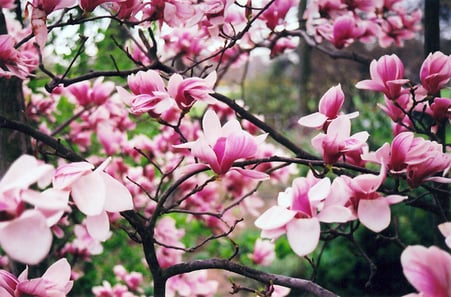
Saucer & Sweetbay Magnolia
The saucer magnolia can be grown statewide. It is slow growing and eventually forms a small multi-stemmed tree. It flowers very early spring with lavender or pink tulip-shaped flowers. The slow growth allows its use as a large shrub for many years (according to the Missouri Department of Conservation's "Missouri Urban Trees").
Sweeybay magnolia is evergreen in southern areas and deciduous in more northern areas. Sweetbay produces fragrant white flowers among the leaves in late spring and early summer. It is a native tree that is surprisingly hardy; growing in Chicago and north of Boston. It is recommended to plant by a path where you can appreciate the sweet fragrance of the flowers as you come and go. Most grow 10-12 feet but some grow taller further south you go. Hardy Zone 5-9.
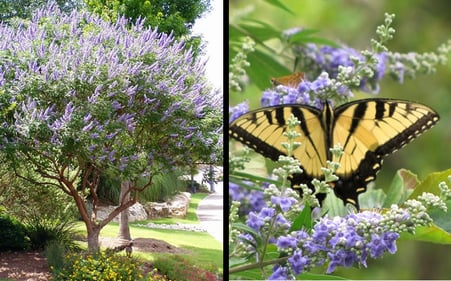
Chaste Tree
Long after all of the spring color is gone the Chaste tree blooms, where its luminous lavender spikes of flowers are a welcome sight for your late summer landscaping. The flowers are about 6 inch wands above abundant, grey-green foliage, and the effect is grand and enjoyable. The Chaste tree grows up to 20 feet tall and wide in the South. Grows well in an area where it gets almost no water and it needs minimal care. Grow in sun. Hardy Zones 6-9. It grows as a die back plant here in Kansas City Landscapes because it gets cold.
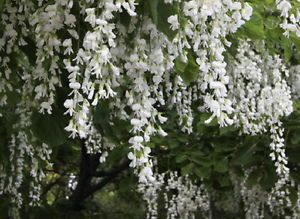
American Yellowwood
Gorgeous wisteria like fragrant white flowers put on a wonderfully brilliant show in early summer. Yellowwood is native to the mid-Atlantic and the Midwest but is now very rare in the wild; which is really sad as breathtaking as they are. It is prized for its smooth silvery bark. The flower is luxurious, and a bee magnet, but yellowwood does not bloom until the tree is over 12 feet tall, and then blooms are best every second or third bloom. Fall foliage is a wonderfully soft yellow. It grows 30-50 feet tall with a wider spread. Pruning required from an early age to encourage graceful mature from. Hardy Zones 4-9.
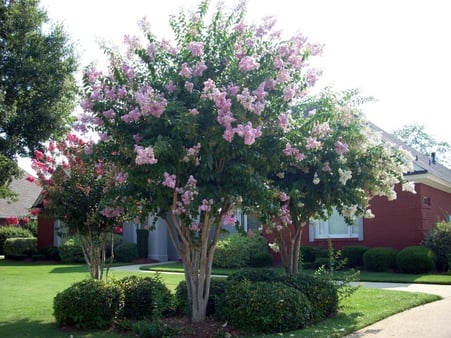
Crape Myrtle
In the blistering heat of a Midwest summers, crape myrtles display dense cloud like flowers in white, pink, purple or red. A single tree can have the appearance of a grove since multiple trunks are a norm. The older they get, the more deeply notable the harminous trunks become. In the summer the paper thin bark peels away, exposing polished, mottled trunks. Crape Myrtles need hot summers to flower best. Making great island landscaping trees for parking lots, where the reflected heat can prompt them into a glorious bloom. Many have wonderful fall color. Most grow 15-25 feet tall. Hardy Zones 7-9; grows as a die back plant in colder areas.
Advice from our expert
* Using native trees is the best way to impart a sense of regional identity to your landscaping and they attract native pollinators and birds.
* Shop locally. Independently owned garden centers and nursery specialists are likely to have some treasures among their inventory. Try Suburban Lawn & Garden or Rosehill Gardens if you are local to the Kansas City Metro area!
* Talk to a professional about proper pruning techniques for your unique flowering trees. Get on a maintenance program to ensure your trees health and vigor for life.

